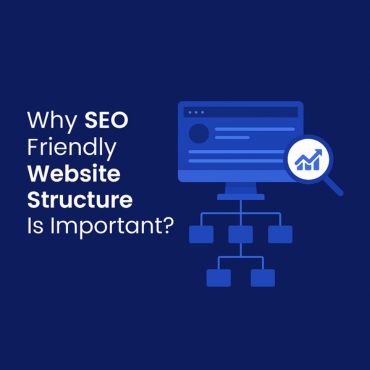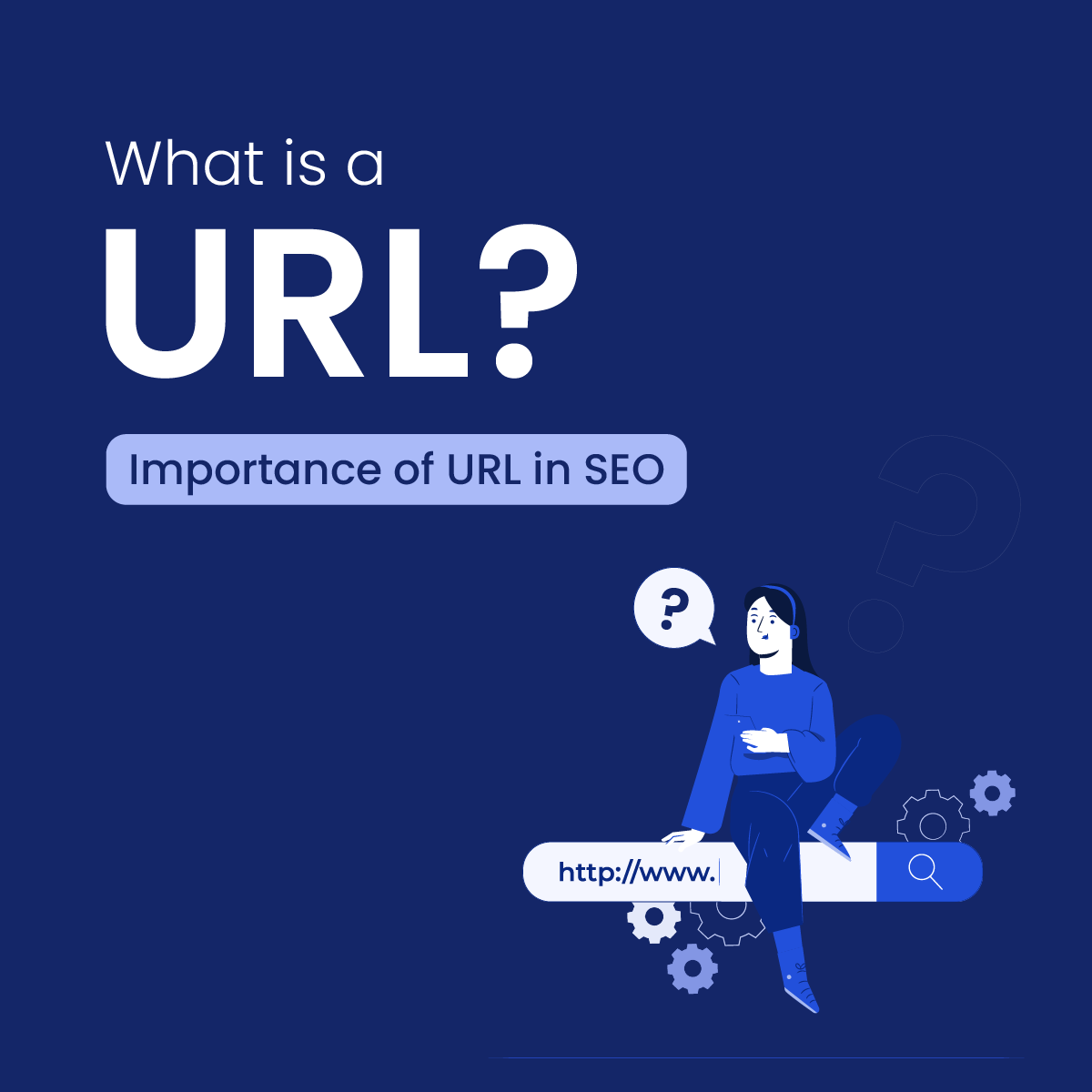
Table of Content
- What is a broken link in SEO?
- What are the reasons for broken links?
- Types of Broken Links
- How to check broken links
- Find broken links with SEO Tools
- How to fix broken links
- Pro Tip 💡: How to do link building with broken link
- Conclusion
Broken links, which are also called link rots or dead links, refer to links that do not take visitors to the intended URL. Just like being misled by direction signs and ending up at a dead end, broken links leave users feeling frustrated.
Unlike a dead end blocking your road trip, a broken link can sabotage your SEO efforts and credibility. But the good news is, they’re simple to spot and fix. So, instead of stressing out, let’s explore how to deal with broken links effectively.
What is a broken link in SEO?
Broken links are hyperlinks that do not function properly. When clicked, they do not lead to the desired page. This often happens because the linked pages are either moved without proper redirection or deleted altogether.
However, these links do lead to error messages, and some errors or examples that a web server might display in such cases are:
- 404 page not found
- Bad URL
- 400 bad requests
- Empty
- Bad code
- Bad host
- Timeout
- Reset
What are the reasons for broken links?
Having broken links on the website is common, and there are several reasons why it happens. Some of them are:
Misspelled or incorrect URL:
An incorrectly written or formatted URL leads to an error. When there’s a typo or formatting issue, the server can’t recognize the request, resulting in an error. Common mistakes include misspellings, extra spaces, or forgetting to add “https://” or “http://” at the beginning of the URL.
Deleted/updated URL
Many times, the target page is either deleted or updated to a new URL. However, people often tend to update the new link, and as a result, the desired page throws an error.
Geological or firewall restrictions
Some might see the link as broken while others see it as fine. But it’s not favoritism or bad internet causing this. Instead, geographic or firewall restrictions are to blame, limiting access to certain parts of the world or country. So, you might encounter errors like “This video is not available in your country.”
Lost pages
In the human world, pages can get lost too. While this happens less often now, there’s still a risk of losing web pages during a website migration. So, businesses, be cautious during the migration process, both for your sake and for your viewers’. All you can do is wait for the page to get updated.
Malfunctioning Plugins
Certain links might not work because plugins malfunction on the website. Another reason can be a JavaScript or HTML error that causes elements to break on the webpage.
Moved content
This is another common reason links break. If the content is removed or shifted to another location without updating the URL, the link will lead to an error instead of the content.
The website is down
When a website goes down due to technical or other reasons, it impacts various types of links connected to it. However, the effect varies based on whether the downed site is external or your own. If none of the links to the website work, it may signal a complete website outage. In such cases, you likely recognize the severity and should address it promptly. Additionally, it can result in a decrease in rankings and web traffic.
URL structure
If the website’s URL structure has been recently changed without implementing 301 redirects, it will break the inbound and internal links to those pages or sites.
Setting up 301 redirects is crucial because they ensure that the changes are reflected, preventing the links from breaking and enabling users to access the desired page.
Types of Broken Links
Clicking the broken link will only lead you to one destination – errors (some of them mentioned above). However, the error displays a hope that the page or site will soon be available
Internal broken links:
Internal links on the website lead to pages within the same domain. These links often break due to changes in the URL structure or removal of content, resulting in errors instead of accessing the intended page or content.
For example, let’s say you had a page with the URL https://abc.com/services. But then you decided to change the URL to https://abc.com/our-services. Any internal links pointing to the old URL will be broken because they’re still pointing to the page’s old location.
Orphaned pages:
This term is used for pages that do not have links from external or internal sources. They are often overlooked by search engines, and thus, their rankings are not great either.
External broken links:
These links originate from sources outside of the website and direct users to specific pages on third-party sites. External links typically break when the referred content is deleted or when the URL structure changes.
Redirect chains:
These types of broken links are generally the result of several redirects, and working on redirect chains is crucial to providing a smooth user experience.
Broken images and media files:
Broken media files and pictures can significantly impact the overall user experience and SEO. Make sure that all multimedia elements uploaded to the server are functioning properly.
How to check broken links
Thanks to technology, there are several tools available for checking broken links. Some of the best ways to identify broken links include:
Find broken links with Google Analytics
Ensure you have access to your Google Analytics account and that your 404 pages have recognizable titles such as “Page Not Found.”
Log in to your GA4 account.
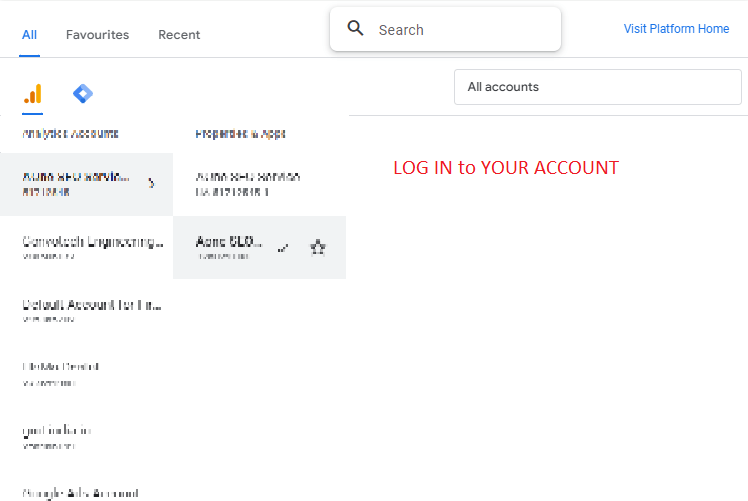
Go to the reports section.
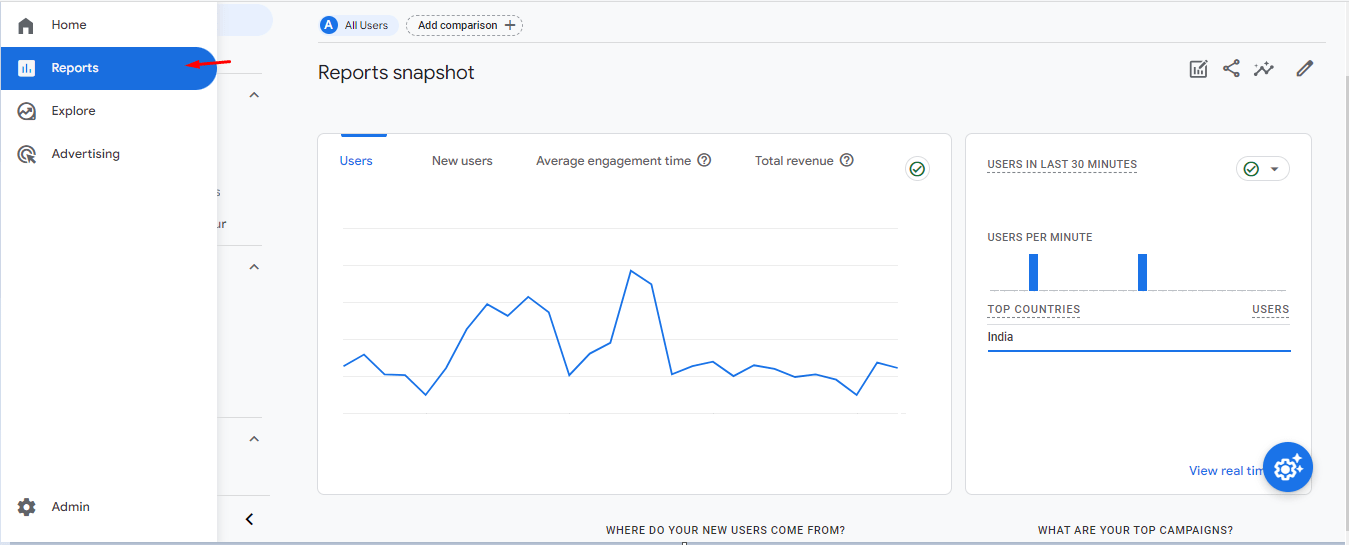
Click on “Engagement,” and a drop-down menu will appear.

Select “Pages and Screens” from the drop-down menu.

Scroll to the bottom of the page to view data about your URLs.
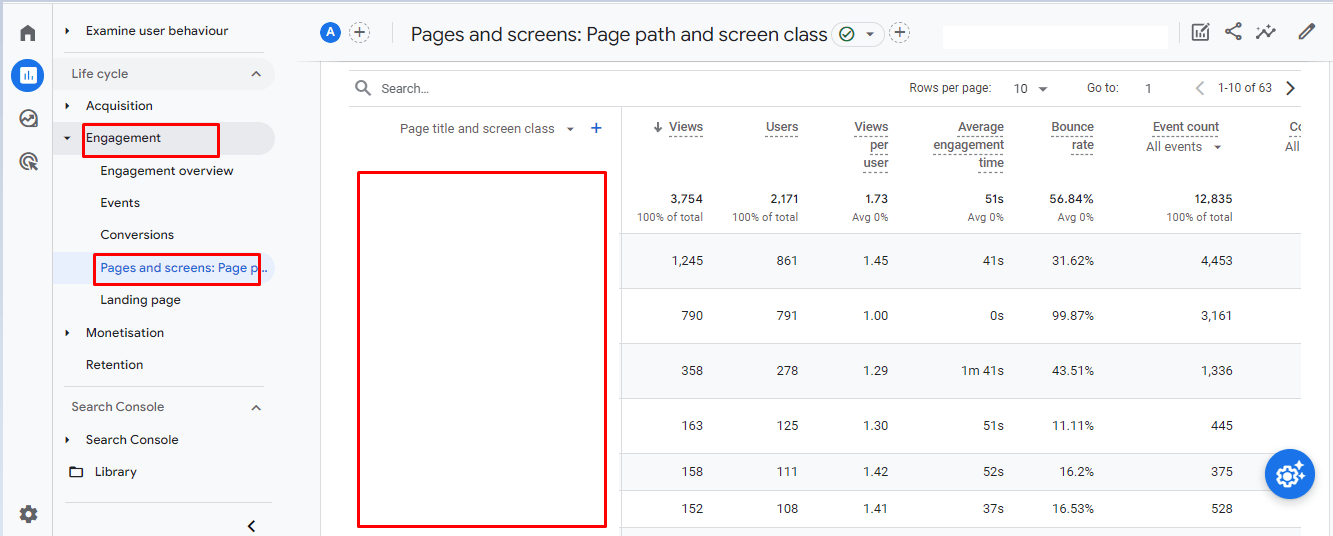
In the search bar, type “404,” “Page Not Found,” or any relevant title and add filter to filter with landing page.

The pages associated with broken links will appear.
In case Google Analytics responds with “no data available,” try creating a custom report on GA4.
Find broken links with Google Search Console
Steps to Use Google Search Console for Checking Broken Links:
Log in to your Google Search Console account. >> https://search.google.com/search-console
Add or select the property you want to evaluate for broken links.

Now, let’s proceed
Go to the overview page and select pages under the indexing section
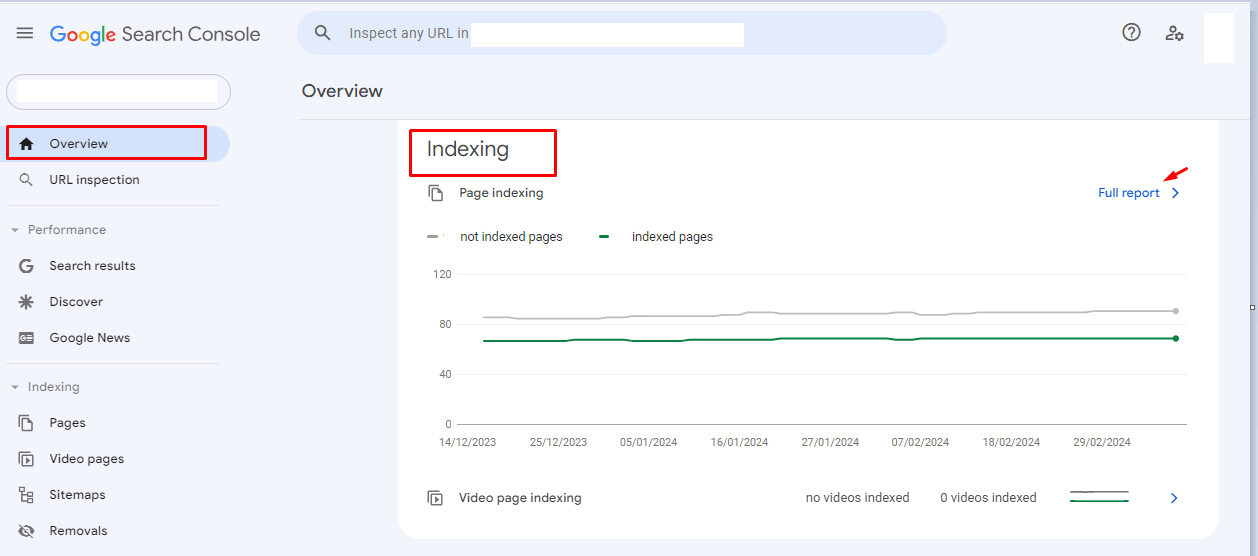
At the bottom of the page, click on “Not Found (404)” from the section – Why pages aren’t indexed
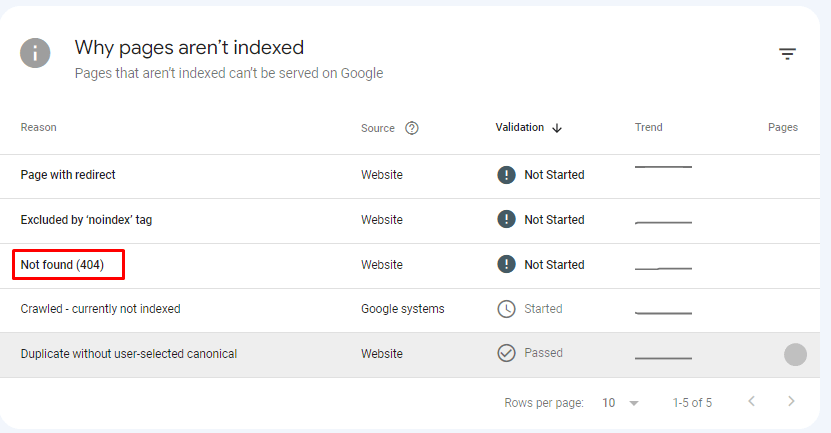
All instances with a 404 error in your domain will appear
Click on any link you wish to, and a window with options will appear, choose to inspect the URL
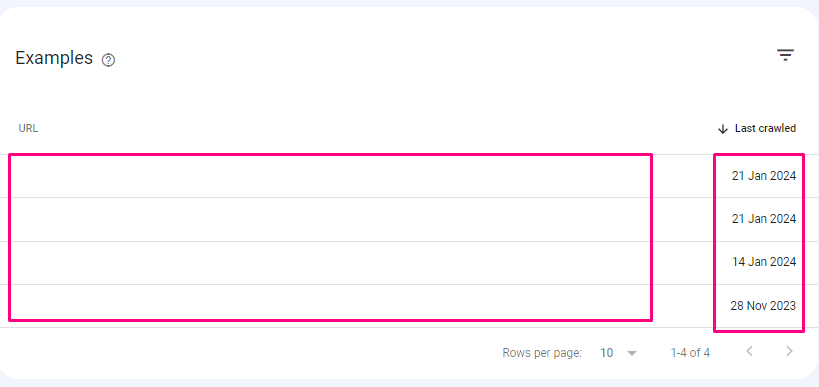
The data concerning broken links will appear, helping you understand the exact reason behind the 404 error.
Find broken links with SEO Tools
Another way to find broken links while conducting a technical SEO site audit is by using a powerful tool. Such as:
Screaming Frog
The Screaming Frog SEO Spider is a flexible and powerful website crawler. It can crawl websites of varying scales to find server errors and broken links.
Crawl The Website

Click the ‘Response Codes’ Tab & ‘Client Error (4XX)’ Filter to View Broken Links

View the Source Of the Broken Links by Clicking the ‘In links’ Tab

Here’s a closer view of the lower window ‘inlinks’ data –

Use the ‘Bulk Export > Response Codes > Client Error Export

Semrush
Semrush is another powerful SEO audit tool. Its crawlers can scan an entire website to identify errors and broken links.

You may see a list of errors that look similar to this:

Click “X internal links are broken” or any other error. This will show you a report of what pages contain broken links.
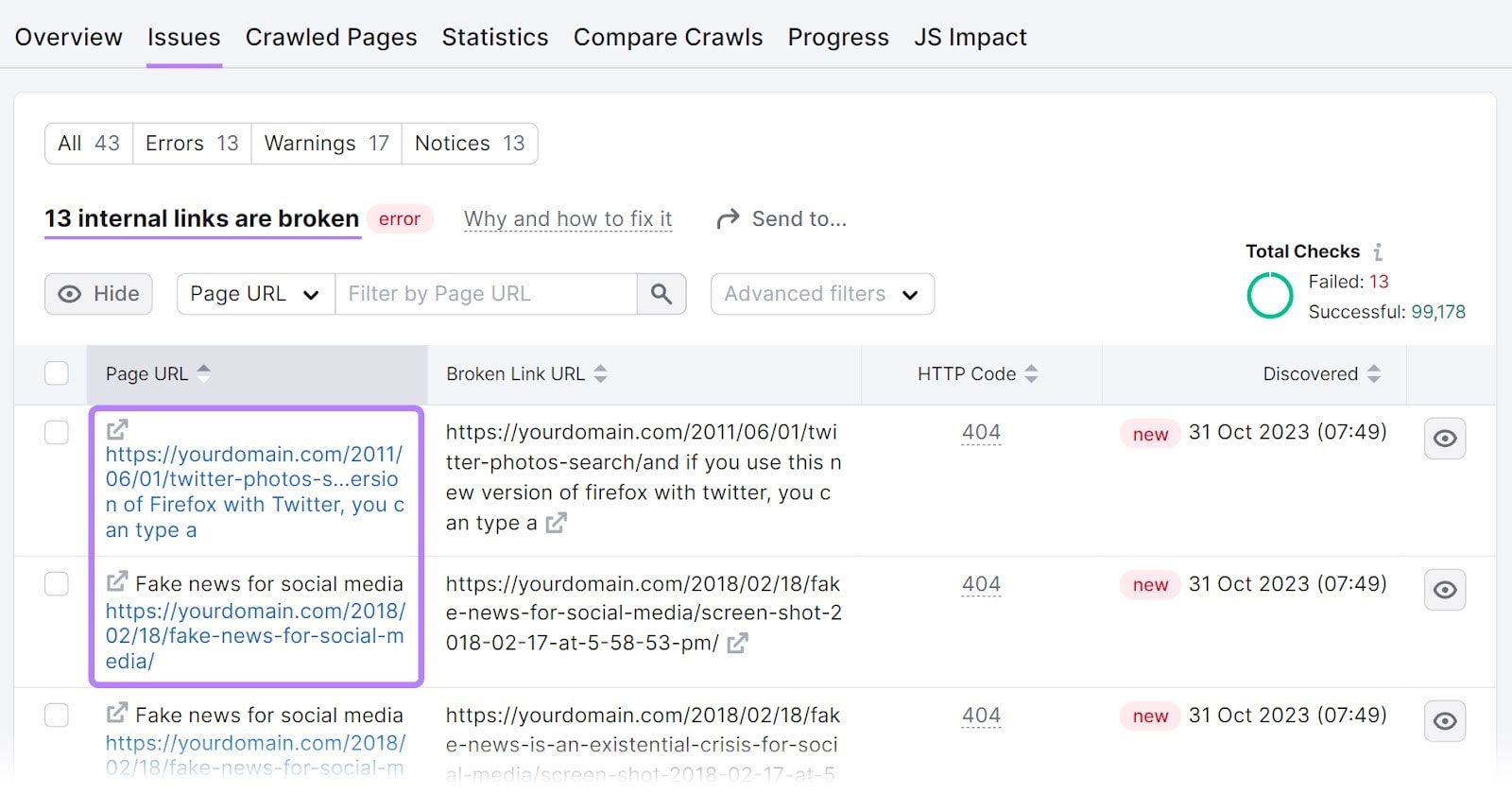
Ahrefs
Ahrefs is the second most active crawler after Google. The tool updates its database every fifteen minutes, and with Ahrefs’ broken link checker, you can easily identify every broken link associated with a website.
Step #1: yourdomain.com -> Pages -> Best by Links -> add a “404 not found” HTTP response filter.
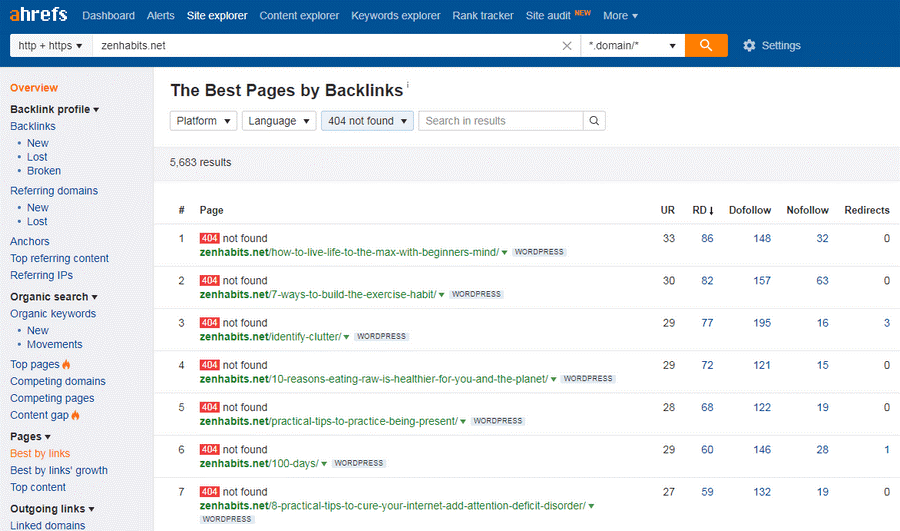
Online free broken link checker
The online free broken link checker has spiders that crawl the entire website to check every page for issues. The spider identifies invalid references on the website, and for every bad URL (external or internal), you can access data containing highlights and page sources of the non-working URL.
How to fix broken links
The process of fixing broken links depends on the type of broken links you are dealing with.
Internal broken links
Three ways to fix internal broken links are:
- Updating any typo errors in the URL
- Simply deleting the link that is no longer required.
- Inserting a 301 redirect if you have moved the webpage or no longer sell a particular service/product but something similar to that
External broken links
Two simple options to fix external broken links are:
- Replacing the broken link with a valid URL
- Removing the link entirely if the content of the page no longer exists or adds value
Pro Tip 💡: How to do link building with broken link
Building links using broken or dead links refers to the practice of replacing error web pages with valid URLs or targeted websites. The process involves four major steps. They are:
Use backlinks to identify broken pages
Use online link checkers to find pages with broken links. In this step, you should search for:
- Broken web pages referring to a particular topic
- Competitor’s broken pages with backlinks
- Broken links on competitor’s sites
- Broken links on resource web pages
Investigating the links
People often begin by creating a replacement page similar to the identified broken page with backlinks. However, this is not the best approach since your page won’t have quality backlinks, and you need to understand what people visiting the broken linked page are looking for. Therefore, you should check the quality of broken links and understand the reasons behind them.
Creating replacement page
Once the identification and investigation are complete, it’s time to develop a replacement page. To do this, you need to:
- Create a rough outline of the page
- Include valuable information and use data from the investigation to improve the content
- Look for ways to improve your replacement page
Outreach
This refers to pitching the replacement resource to replace the broken link with your link. This can be done in two ways:
- Sniper outreach, wherein you will send customized and unique emails to every potential replacement resource.
- Shotgun outreach wherein you will share the same mail to everybody. Thus, no customization.
Conclusion
Broken links can significantly impact SEO outcomes in several ways. Therefore, it’s crucial to identify and fix broken links as soon as possible. However, this task can be challenging for those with skill and time constraints. But you don’t need to worry when experts at AONE SEO Service, the Best SEO Company in India, are ready to cater to your business’s SEO needs.
So, don’t wait, contact us!


